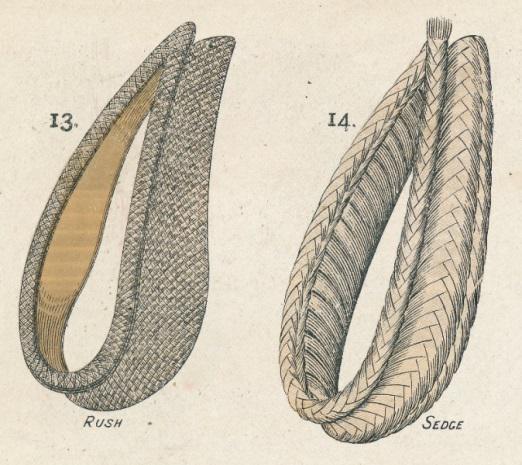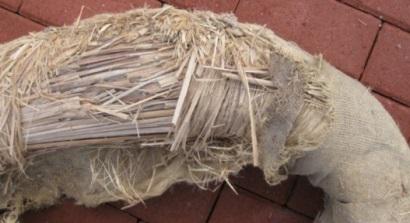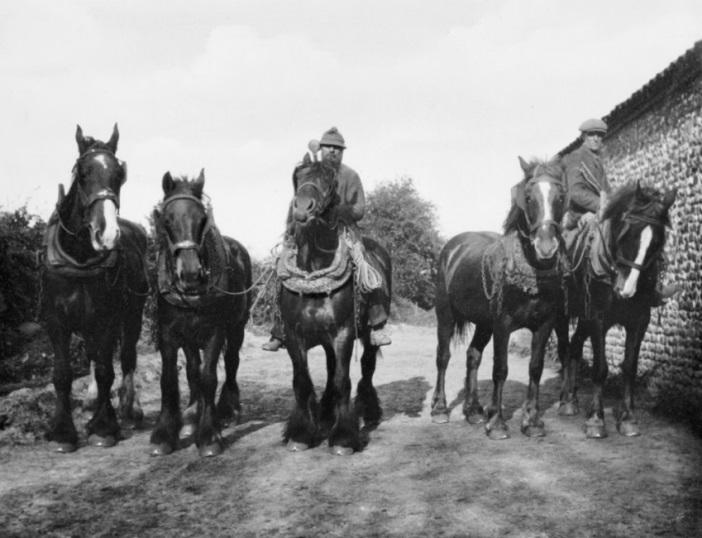In 2014, I wrote an article for the UK’s ‘Heavy Horse World’ titled “Rush Collars – rare survival from the horse era”. The following is a reappraisal of my article concentrating on sedge horse collars associated specifically with the county of Norfolk, England. There is little doubt that “sedge” and “rush” collars are different products, but I am reliably informed (pers. comm. Mike Flood, Skeyton Corner, Norfolk) that in Norfolk both names are locally used for “sedge”.

To try and clarify the collar difference, I knew a German saddler and collar maker, Fred Hulsch, who worked in Germany before the Second World War. Captured as a “prisoner of war”, Fred stayed in England, first working for a harness maker called Bob Powell (no relation!) in Fakenham, Norfolk; finally working as a respected saddler in Walsall, England. Fred told me that “rush collars” were associated with coaching horses. These, as illustrated from Hampson & Scott’s, 1904, ‘Equine Album’, were of finer construction than the true sedge collars and their flexible construction allowed the quick change of different coaching horses without having to fully fit leather collars.
The manufacture of sedge horse collars was reliant on the ready supply of “Sedge” (Cyperaceae) harvested from Norfolk’s sedge fen wetlands and riversides. The collars may also have been associated with the neighbouring Cambridgeshire county fenlands. Historically “fens” are usually low lying, watery peatlands, some associated in recent centuries with being drained for agriculture. Possibly with a long historic usage pre-dating leather-faced collars, owing to their organic, less durable manufacture, the knowledge about and survival of sedge collars has been minimal.
Horse collar making is often associated with the two traditional skills of “saddler” and “harness maker”, which strictly are separate trades. Some tradesmen in both skills could both make and repair collars. However, collar-making was a separate trade, and that divided further into such as “sedge” and “rush” collar making. Evidence for this in Norfolk is reflected in the following advertisements. Firstly, “fine Sedge Collar Work” from the ‘Norfolk News’ of June 8th, 1889, page 3 and secondly, “Rush Collar Making” from the ‘Norfolk News’ of August 2nd, 1862, page 1. In the former, does “fine” really mean sedge or is it rush? In the latter, is it the other way around?


As may be seen from the following photographs of the author’s sedge collar, the manufacture of the collars was, firstly to make the body of the collar by laying, shaping and tightly packing the sedge at length, followed by a layer of sedge wrapped around the body to hold it in shape. Secondly, using thick plaits of sedge, these were stitched together with twine to form the “afterwale”, that part of a collar more commonly faced with leather. Thirdly, a thick plait, the “wale” or was then stitched to the “afterwale” to create the pipe into which the, usually, wooden hames were seated. To complete the collar, as shown, the body back was lined with hessian. Note how in in the Hampson & Scott sedge collar illustration the “afterwale” appears to be shown as one large flat plait.

Sedge collars were relatively cheap compared with rye straw-bodied and leather-faced collars. Evidence shows that Norfolk harness makers sold them as part of their regular stock. For example, on August 29th, 1846, the ‘Norwich Mercury’ included sedge collars in the “stock in trade” auction of J. Rice, saddler and harness maker, Bethel Street, Norwich. Similarly, in the ‘Eastern Daily Press’ from February 3rd, 1900, sedge collars were listed as part of the bankruptcy sale for William Ducker, saddler, Red Lion Street, Aylsham.
The English saddlery and harness trade wholesalers from the industrial “West Midlands”, Hampson & Scott of Walsall in their ‘Equine Album’, 1904, advertised sedge collars at 12 shillings per dozen (12) collars. Being less rigid, the sedge collars could fit different horses more easily, could be used in an emergency, and to break in young horses. Again, such collars, as illustrated, were also wholesaled by William Overton of Walsall in their circa 1903 catalogue.


Author: Bob Powell, Kingussie, Scotland, 2023.
Bob Powell is a working horse and farming historian, retired from the Highland Folk Museum, Scotland

Fascinating intersection of biology (botany and zoology) and culture! This article made me look up the difference between grasses, sedges and rushes and i found the following mnemonic on the website of the New York Botanical Garden:
“sedges have edges,
rushes are round,
grasses have nodes from the top to the ground.”